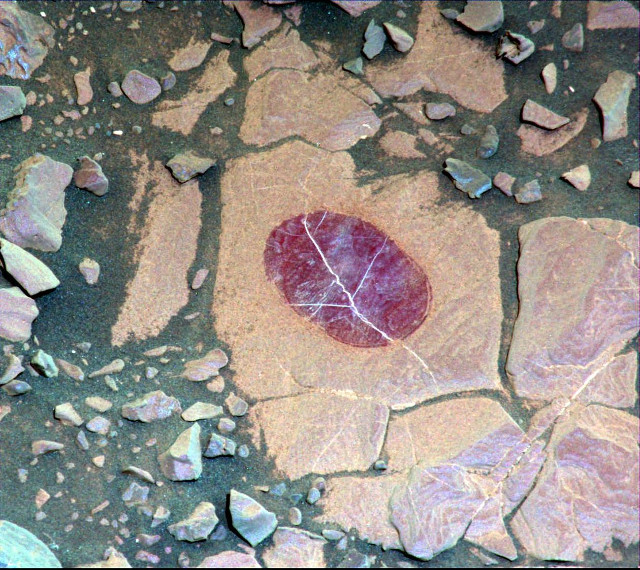
NASA has published a series of images taken by its Mars Rover Curiosity in the Gale Crater area of Mars called the Vera Rubin Ridge created putting together photos taken using filters that allow the mission scientists to identify some minerals. The instruments that have this capability are the MastCam (Mast Camera) and ChemCam (Chemistry and Camera). On this occasion, the MastCam allowed to highlight an iron oxide called hematite.
The Curiosity mission managers decided to send the rover to Vera Rubin Ridge because traces of hematite were detected from the orbit. This mineral usually forms in the presence of water, an important clue in a mission that has among its aims to find and study ancient Martian environments where there was liquid water.
During its mission, the Mars Rover Curiosity already collected a lot of evidence that Gale Crater was once a lake, published by NASA in recent years. In June 2017, NASA presented the evidence of environmental changes in that area, a further element in the historical mosaic of that region.
The scientists keep on collecting data on that ancient environment, how it went through various phases between 3.8 and 3.3 billion years ago and then dried out for good and became the arid environment the Mars Rover Curiosity is exploring. Checking where the hematite was present at Vera Rubin Ridge was important to schedule follow-up detections to establish if that mineral actually formed in the presence of water.
The images show how the MastCam filters were used to highlight the hematite. The top image shows a panorama created by assembling various photos in the versions with the normal colors at the top and with the filters that generate false colors at the bottom. The hematite is highlighted in purple and is visible especially where the rock substrate appears fractured. In fact, the mineral is also present under a layer of dust in areas away from the fractures and to establish it the ChemCam instrument was used instead.
Understanding where exactly the hematite was present allowed the Curiosity mission managers to plan the rover’s path. That was how on September 17, 2017 Curiosity captured the bottom image of the rock that was named “Christmas Cove” at Vera Rubin Ridge. At first it seemed that the amount of hematite was limited but after it was cleaned with the Dust Removal Tool, a strong presence of that mineral was revealed.
The hematite detection work is still ongoing and its distribution will help to understand when it formed and its possible history of interaction between water and rocks. The possibility to carry out those detections on-site allows accurate analyzes to reconstruct in detail Gale Crater’s history.



Permalink